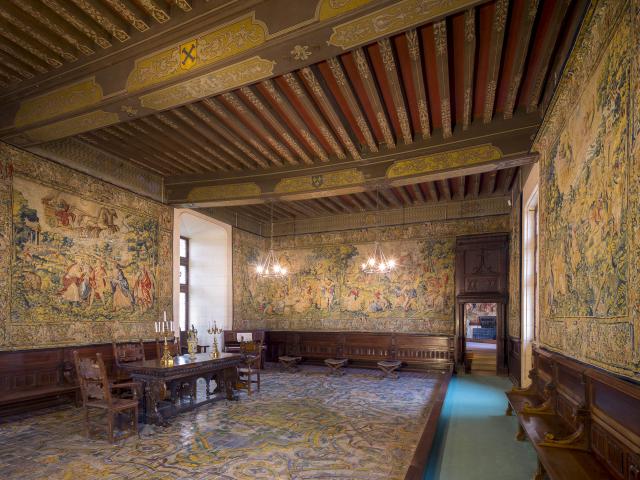The so-called “Historical” apartments
published at 19/10/2022
The princely couple travelled the world for forty years amassing an outstanding collection of artworks for Château de Chaumont, following the example of Nélie Jacquemart-André in her urban mansion on Boulevard Haussmann in Paris, the Royal Abbey of Chaalis near Chantilly, and Baroness Ephrussi de Rothschild in her villa in Saint-Jean-Cap-Ferrat.
The development programme embarked on by the architect Paul-Ernest Sanson in 1880 was divided into several stages, the two main ones being the creation of private apartments for the use of Prince and Princess de Broglie and their four children and constitution of so-called “Historical” apartments on the 1st floor of the East wing.
The “Historical” apartments’ rooms were opened to visitors in 1899 when the princely couple were not living at the Château. They were designed to evoke the layout of a 15th and 16th century lordly residence, as well as the famous owners who had lived in the Château.
All these rooms are furnished with art objects dating from the 15th to the 19th century (pieces of furniture, tapestries and paintings). In a letter to his son dated 3 October 1898, the Duke de Broglie wrote, “Another quality I admire is the genuinely artistic taste with which you have restored this ancient and beautiful residence of Chaumont while doing nothing to mar its character. I should very much like to see this remarkable work appreciated by judges truly worthy of bearing witness to it; that would earn you, among artists, the reputation you deserve and which, as in all things, your modesty does not allow you to seek.”
The tapestries were chosen with the greatest care, whether French or Flemish. During a visit to Chaumont, Prince de Broglie’s niece, Countess Jean de Pange (1888-1972) wrote, “My uncle wanted to recreate the furniture in each room on the basis of authentic documents. He hung magnificent tapestries along the walls.”
The so-called Ruggieri room

The so-called Catherine de Medici room

The council chamber

The guard room

Study known as the king’s room

The spiral grand staircase

The chapel
